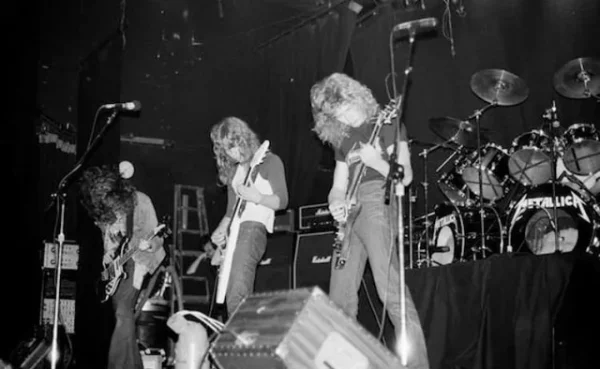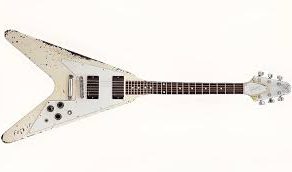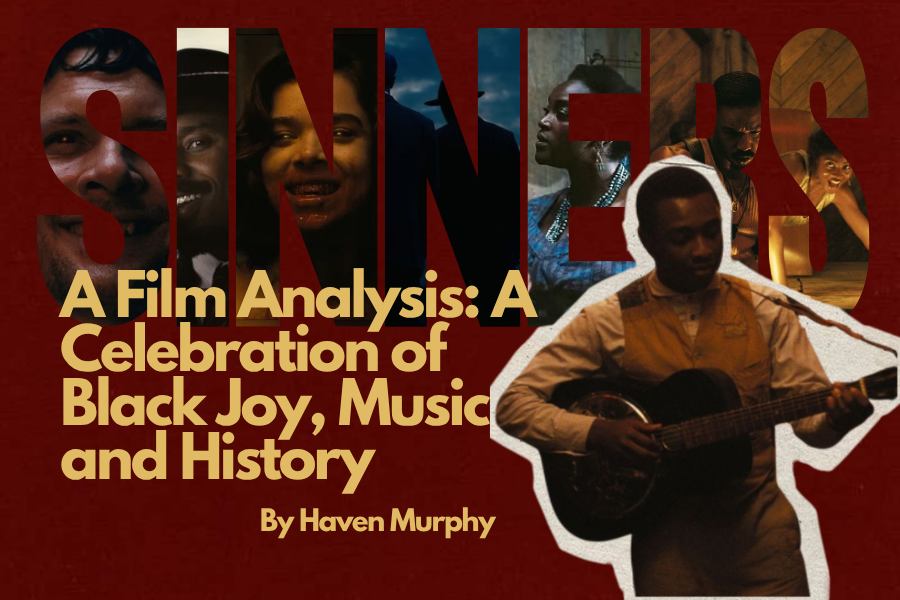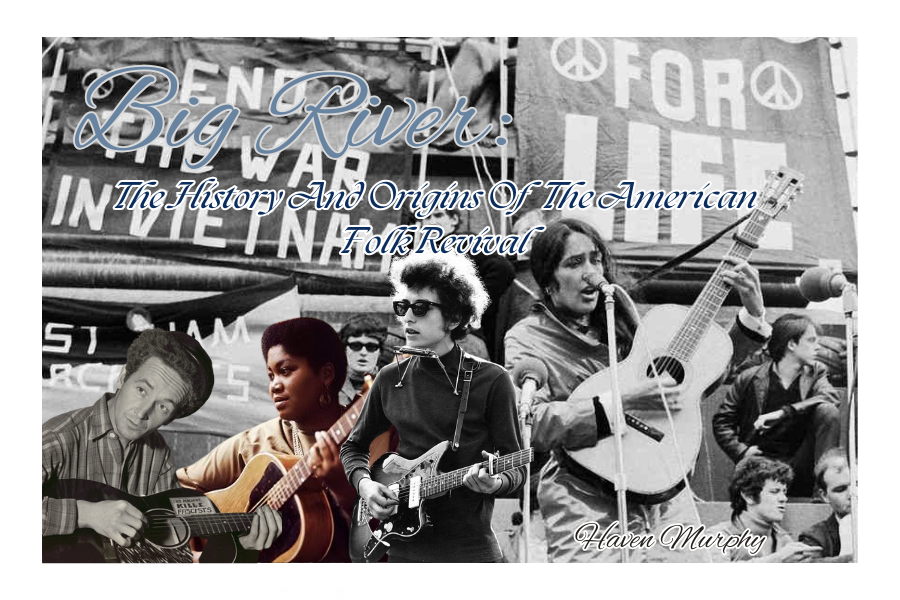On April 14, 2023, Metallica announced their eighth world tour, which came in the wake of their 11th studio album, “72 Seasons.” On Sept. 19, two years into the M72 tour, the band announced an extension into 2025. This tour extension makes a statement about the relevance of metal today, implying the frequent changes in mainstream music and media have yet to throw the genre off of its axis—and fans are to thank.
Metallica is an American thrash and speed metal band founded in 1981 by vocalist and rhythm guitarist James Hetfield and drummer Lars Ulrich. Founded in Los Angeles and based in San Francisco, the band exploded with their debut studio album “Kill Em’ All”, released in 1983. Metallica’s early work—like “Kill Em’ All”, “Ride The Lightning” and “Master of Puppets”, pioneered the speed metal genre in the early ’80s, alongside bands Slayer, Anthrax and Megadeth. Metallica is famously inspired by rock and metal bands like Queen, Black Sabbath, Judas Priest, Motörhead, Thin Lizzy and Misfits. This inspiration is evident on the band’s 1998 compilation album, “Garage Inc.”, where Misfit records “Die, Die, My Darling” and “Last Caress / Green Hell” are covered.
The various minds behind Metallica contributed to the band’s overall success. Inspired by ’70s rock band Aerosmith, James Hetfield began teaching himself guitar after his mother purchased a ‘69 Gibson SG electric guitar from a kid at Hetfield’s school. He practiced by jamming with classmates after school. However, Hetfield used the Electra 2236 Flying Wedge to record “Kill Em’ All.” Through an ad posted in the Recycler newspaper in 1981, Lars Ulrich connected with Hetfield via another friend. The band’s first bassist, Ron Mcgovney, left the band due to growing tensions and conflict in late 1982. In 1982, Hetfield and Ulrich discovered bassist Cliff Burton while he was performing with the metal band Trauma in Los Angeles. Not long after, replaced Mcgovney as the official bassist of Metallica, contributed to the production of “Kill Em’ All”, and played alongside Hetfield, Ulrich and lead guitarist Dave Mustaine for their first live show in March 1983.



On September 27, 1986, Burton died at the age of 24 in a fatal tour bus crash in Dörarp, Sweden, during the promotion tour of 1986 album “Master of Puppets.” A month after, bassist Jason Newsted auditioned for the role and remained in the band from October 1986 to 2001. In 2003, former bassist of Ozzy Osbourne’s band, Robert Trujillo, succeeded Newsted and is currently Metallica’s bassist. Even as Burton, Newsted and Trujillo’s playing styles differ from each other–an example being Burton’s finger playing, technical and classical inspired approach compared to Newsted’s simple, solid, tight sound and use of picks, and Trujillo’s classic, fluid and precise style–they each created their own sound of Metallica, shaping the band’s discography to what we know today.
The band’s first lead guitarist, Dave Mustaine, is credited with the contribution of co-writing and riff creation of four songs–”The Four Horsemen”, “Jump In The Fire”, “Phantom Lord” and “Metal Militia”–on “Kill Em’ All.” Even considering his reign in the band lasting from 1981 to early 1983, Mustaine’s iconic riff contributions are present on two tracks–”Ride The Lightning” and “The Call of Ktulu”–of Metallica’s 1984 release, “Ride The Lightning.” Mustaine was fired due to conflict with the band and was then replaced with Kirk Hammett, the band’s lead guitarist from April 1983 to today.


Shortly after, Mustaine met bassist David Ellefson and formed hyper-successful thrash metal band Megadeth. On June 12, 1985, debut album “Killing Is My Business…And Business Is Good!” was released, establishing the band in the thrash scene and contributing to the genre’s authenticity as a heavy metal subgenre.
The 1991 release of Metallica’s fifth studio album, “Metallica”–but most commonly referred to as the “Black Album”–catapulted the band into an entirely new area of success. The slow and heavy sound contrasted with the fast-paced, aggressive and loud thrash of the first four studio albums. This shift from thrash introduced the broadest audiences to metal. The Black Album’s success led Metallica to perform at The Monsters of Rock festival in Moscow, Russia only a month after the album’s release, which made history as one of the largest concerts of all time with 1.6 million people in attendance. (For reference, that is nearly 15x the 2024 population of South Bend.) “Metallica” spent 45 consecutive weeks on the Billboard 200 chart, and four at No.1. According to Billboard.com, as of 2024, “Metallica” is the only rock/metal album on the list of “Albums With Most Weeks at No.1 on Top Catalog Albums,” placing seventh out of 17 artists.
But who came before and inspired the greats we know now? In 1970, heavy metal band Black Sabbath released their first two albums, “Black Sabbath” and “Paranoid.” The success of these albums marked a paradigm in the world of rock and introduction of heavy metal. Several successful bands–metal, rock and alternative bands alike, were inspired and influenced by Black Sabbath. Bands creating their beginnings in different eras shared similar inspiration, like Iron Maiden in the mid ’70s, Guns ‘n’ Roses in the late ’80s and Soundgarden in the grunge-dominated ’90s.
Additionally, even the pioneering and establishing bands who have inspired the substantial musical talents we know today, have their own inspirations. For instance, Black Sabbath were inspired by the likes of pop-rock band The Beatles, Led Zeppelin and Jethro Tull. The jazz of Count Basie, Django Reinhardt and the experimental rock of Frank Zappa also made its mark on the members of Black Sabbath and how they created their sound.
When and why did the sound of metal change? As the genre stems from many different origins and inspirations, genres and subgenres are bound to contrast with each other and have overall different sounds. With time—and more bands exploring and popularizing various genres and subgenres—bands who have distinguished themselves in the spotlight are shadowed by the rise of alternative genres.
A preeminent example is the rise in popularity of scenes and genres like grunge and alternative rock overshadowing glam metal. Glam and hair metal bands like Mötley Crüe and Warrant experienced record lows in the mid to late ‘90s, mostly due to the explosive popularity of Seattle alternative bands like Soundgarden, Alice in Chains, Pearl Jam and most recognizably, Nirvana. The Seattle sound, known as “grunge”, of these bands was a vast contrast to glam metal. As grunge got bigger, the flashy, spandex and makeup aspects of glam quickly became “uncool”, and the metal genre actively died out. The new style of affordable, disheveled and effortlessly uncoordinated fashion emerging alongside the anti-establishment attitude of grunge quickly overpowered the glam metal scene.
But, even if certain subgenres and bands subsequently die out following the rise of new wave, it isn’t necessarily a bad thing. With the introduction of new music—like scenes, genres and subgenres alike—what’s mainstream won’t remain mainstream forever. According to The Tower writer Sydney Barnette, “All music will make its rounds, trend wise. Punk was popular, then pop, then alternative music, then back to punk and right now, it’s back to pop and rap.”
The popularity of certain bands and genres will inevitably bring opposing attitudes, perspectives and eventually, more music. When people feel, they create art. The new bands that took over in the ‘90s, replacing your favorite band on the top spot, isn’t necessarily out to get them. Usually, not always—people are moved by the way statements are paired alongside a new and addictive sound.
With the explosion of new ‘90s and early 2000’s genres and subgenres—most prominent examples being grunge and hip hop—arrivals of entirely new subgenres made their mark in metal. Nü metal took the mid 1990’s by storm, combining influences from hip hop, funk, grunge, rap and groove, amongst many others. With their late 1994 self-titled album release, Korn established and pioneered the nü metal genre. Era-defining bands like Limp Bizkit, Evanescence, Slipknot, Linkin Park, and System of a Down made the genre what it is known to be today. The prime of nü metal capped off in the late 2000’s. This decline is often credited to major record labels contributing to over saturation in the genre, but most agreeably—like all do when the next big thing appears,—bands and fans rode the wave of the genre until it eventually died down.
Specifically, comparing nü metal bands that harbor influences of funk, like Korn, to bands like System of a Down—who’s discography embraces a more punk sound, establishes the many different sounds that makes nü metal unique, while still falling under the nü metal umbrella. A great example of a both hardcore punk and funk coordinated nü metal band is Snot, a personal favorite.
Even as the genre leaked out of the mainstream in the late 2000’s, the established bands from that time currently remain and are still popular. Bands like Korn, Slipknot and Limp Bizkit are still touring and promoting, and the fans are still there! Fans from debut, fans from peak popularity and new fans from today are the sole anchor of older bands—thematically speaking, metal bands. The loyalty of audiences, alongside the band’s creations that draw in said audiences, is what keeps not just bands, but also genres and subgenres relevant and long-lasting. Many new fans are introduced to the genre through older fans, a relative example being our staff member of The Tower, Sydney Barnette! “I started listening to metal music because my step dad was really into it–”. Not only does this create new fans, but it also contributes to bonding and relationships.
The audience may take inspiration and create based on what they love, providing longevity to the genre. 2010’s and ‘20s thrash bands like Condor, Deathhammer and Demiser are amongst newer thrash bands of today contributing to the steady resurgence of the genre. While not thrash, ‘10s bands like BABYMETAL are a staple in international metal genres, like kawaii metal–meaning cute metal, which is a mix of Japanese pop and heavy metal. Other examples, like Rina Sawayama, ALT BLK ERA and numerous others have taken inspiration from nü metal and other metal subgenres, contributing to not just great music, but resurgence and relevance for the bands and genres they were inspired by. Not that the bands they are inspired by are irrelevant, but to some who may be into contemporary artists and music, they just may not be aware of them. Hearing new artists interpolate and share their inspirations with their audience introduces them to said inspirations, which may be the older bands we’re familiar with.
Metal specifically has been reported in studies to lessen negative emotions, and because of the fast-paced energetic nature of the genre, aids in working on more actively focused tasks–like studying. According to metal blogger, The Beast, “[Metal] helps you focus and remember things while studying. Makes you feel good: When you listen to exciting music, like metal, your brain releases a chemical called dopamine.” The genre having relevance in helping people in various ways such as studying encourages relevance and exploration.
Recently, classic metal bands like Metallica have been put back into the spotlight—not like they ever really left. Not only because of new album releases, but also because of their inclusion in contemporary media. The band’s 1986 hit record “Master of Puppets” was featured in Netflix’s “Stranger Things”, which brought on a new wave of new, younger fans.
Even as the bands we love may be pushed out of the spotlight and mainstream due to new incoming material, does not mean it’s the end. As a fan, think about it from the perspective of the audience, rather than the record label. Regardless of relevance, music is art, and art lasts forever. The ability to experience something new, fresh and overall unseen—to some—is a feeling nearly every person who listens to music should be able to experience. As long as you listen to it, love it, know it, anything–it will be around forever.









